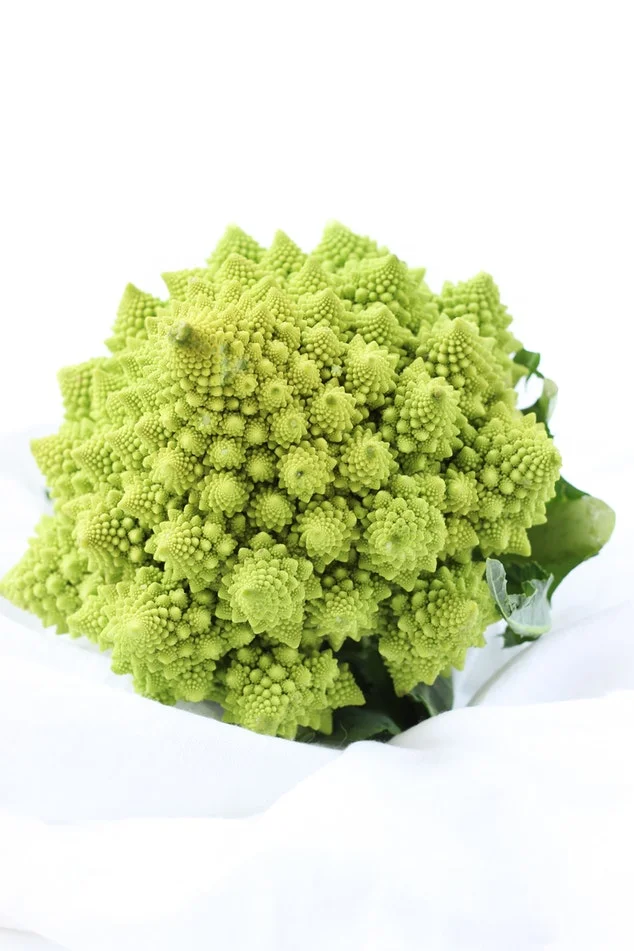There is not a clear answer for this; however, intermittent fasting should not be treated as an effective weight loss strategy. Many do experience weight loss, but intermittent fasting is difficult to sustain long-term and weight gain will most likely follow after one resumes a regular diet.
It’s getting close to the holiday season, a time for heart-warming sweets and holiday parties. Shortly after this festive time comes New Year’s Resolutions of losing that holiday weight gain and eating healthier. Instead of feeling guilty, let’s talk about healthier recipes and how to mindfully indulge to enjoy yourself without missing out on pumpkin pie and other delicious treats.
You probably spend a lot of time buying quality ingredients and putting a lot of effort into preparing healthy and safe meals for your loved ones and yourselves. However, all these efforts can be wasted if you are using certain types of cookware.
If you’ve watched or heard about the new Netflix documentary”What the health” by Kip Andersen, you might be tempted to throw out all animal products you have in your fridge and adopt a vegan or vegetarian diet. But before embarking on an animal product free diet, here are a few points to consider.
Cauliflower is a delicious cruciferous vegetable in abundance this time of year. Enjoy roasted cauliflower, cauliflower fried "rice" and a cauliflower crust pizza.
Eating grass-fed is a conscious decision to eat animal products from animals who are eating their natural diet. It is healthier for the animals to be eating their natural diet and healthier for us as human beings. The food is more wholesome when the animal can eat their natural diet of grass, which often is infused with other greens making their diet high in nutrients.
Let’s BEET the Heat!
It is summer time and beets are in abundance! Time to add some beautiful colors to our meals and try new recipes.
After an eight-year hiatus, the United States nutrition facts label is receiving a makeover! The US Food and Drug Administration (FDA) approved a set of new requirements for food manufacturers. The goal is to make it easier for customers to know what exactly is in their foods and to assist these customers in making healthier choices.
Here in New York City our access to locally grown produce is limited as we are in an urban environment. Community Supported Agriculture provides us access to fresh produce that is locally grown in nearby communities outside of the city.
When strongly craving a certain decadent snack or dish, we should not deprive ourselves, but indulge mindfully.
An average medium sized banana contains about 14 grams of sugar, which is about 53% of its total 105 calories.
Being a "locavore" means one is part of a movement which aims to connect food producers and food consumers in the same geographic region, in order to develop more self-reliant and resilient food networks.
It’s a new season, which means new produce and new recipes to try! This month’s post features the parsnip, a root vegetable that is related to the carrot. Parsnips look like a white version of carrots and can be enjoyed raw or cooked.
Nutrition trends often come from near and far, and some stay for years or only a few months. One nutrition trend, however, seems like it’s here to stay!
Vegetarians have plenty of options when it comes to consuming proteins, and many of these are lower in fat and higher in fiber, vitamins, and minerals in comparison to most animal protein sources.
Summer is just around the corner and the majority of us are looking forward to warmer temperatures and more time outdoors. This also means an increase in fun food opportunities like barbeques and picnics with friends and family.
As we get ready to put our winter clothes away, and prepare for spring, its always exciting to learn about the seasons freshest produce. There are many delicious fruits and vegetables that are “spring friendly”, but one that is both tastes and looks good is beets.
One of the newest nutrition trends on the rise has been the conception of alternative pastas. This newest trend has become particularly popular due to the increased interest in low carb, paleo and gluten free diets causing many people to gravitate toward swapping out their big bowl of wheat pasta for a substitute that has a similar taste and flavor without the high carbohydrate load.
True or False: Every Nutritionist is a Dietitian
Written by Arielle Kestenbaum | Reviewed by Adiana Castro, RD, MS,CDN, RDN
Every Nutritionist is a Dietitian. This is False.
Although many dietitians will refer to themselves as nutritionist, not all who refer to themselves as nutritionists are dietitians. The main difference between a nutritionist and a dietitian is the level of education and medical nutrition therapy clinical exposure. Anyone that studies wellness and nutrition can call themselves a “nutritionist”, but to become a dietitian, one must obtain certain certifications and licensures, and therefore the role of a dietitian is more regulated than that of a nutritionist.
After earning a Bachelor’s degree from an accredited university, as well as having completed many nutrition science courses, a dietitian usually must first complete a dietetic internship or practice program rotating many different areas within the scope of practice of a dietitian. For example, interns are required to rotate within healthcare facilities, food service companies and community settings, where they can be monitored and supervised. After completing the internship, an intern is required to take the national examination before obtaining the Registered Dietitian (RD) credential.
Once registered as a dietitian, they are able to organize food and nutrition plans and promote healthy eating habits to prevent and treat illnesses. They can also work within schools to teach nutrition education, as well as conduct research on many public health issues. There are so many different roads for a dietitian to go that falls under their scope of practice, that would not necessarily be OK for a nutritionist.
The term “nutritionist” is much broader, as it is not as regulated in the United States. Nutritionists typically do not have any professional training, and therefore should not be involved in the diagnosis or treatment of any disease. They definitely can be present for any type of support, as well as promotion of healthy lifestyles, but they cannot partake in the medical nutrition therapy aspect of nutrition (the therapeutic approach to treating medical conditions and their symptoms through specific diets).
Registered Dietitians and nutritionists both want to help people eat better and be healthier, but the education and practical training dietitians receive make them the true experts. This is something to keep in mind whether wanting to enter the field of nutrition or seeking expert nutrition advice!
Main Article: "Put Your Best Fork Forward"
Written by Desireeh Chevere | Reviewed by Adiana Castro MS, RDN, CDN, CLT
The Academy of Nutrition and Dietetics has created a campaign, called National Nutrition Month, for the month of March to advertise nutrition education and the importance of it. It is focused on helping people make informed food choices and developing sound eating and physical activity habits. What’s great about the Academy is that they have professionals that can help guide the public on gradually shifting toward a healthy lifestyle instead of doing it all on your own. The Academy is able to help the public by promoting National Nutrition Month activities and messages throughout the month. They make sure to promote the most valuable and credible source of timely, scientifically-based food and nutrition information, so be sure to be on the lookout for that!
This year the theme is “Put Your Best Fork Forward,” which serves as a reminder that all of us have the necessary tool to make healthier food choices. This month is dedicated to helping people feel empowered to making small changes in their daily lives to help improve health now and also in the long run. A healthier lifestyle doesn’t always happen overnight, so that is why this month is for helping people making small changes over time. The Academy encourages people to balance food and beverages within an individual’s energy needs, rather than focusing on a specific type of food or meal. This month is important because it will help people realize that making healthier eating choices requires a long-term commitment, which will in turn lead to a healthier and more enjoyable life. Below you will get a taste of what the Academy is promoting:
1. Think Nutrient-Rich
Think nutrient-rich rather than “good” or “bad” foods. The majority of your food choices should be packed with vitamins, minerals, fiber and other nutrients. Making smart food choices can help you stay healthy, manage your weight and be physically active.
2. Focus on Variety
Eat a variety of foods from all the food groups to get the nutrients your body needs. Fruits and vegetables can be fresh, frozen or canned. Eat more dark green vegetables such as leafy greens and broccoli and orange vegetables including carrots and sweet potatoes. Vary your protein choices with more fish, beans, nuts and seeds. Try to choose whole-grains when eating cereals, breads, crackers, rice or pasta.
3. Cook More, Eat Out Less
Convenience food isn’t as convenient as we would like, they often cost us more! Try to switch out the frozen dinners and fast food for foods that are prepared at home. Go back to the basics and find simple, inexpensive and healthy recipes to make with your family.
4. Frozen Food
Don’t let all frozen food go, especially not frozen vegetables. At certain times of the year frozen vegetables will not only help save some money but it will also last longer than fresh. For instance, you can try cooking frozen broccoli with a side of rice or pasta and chicken.
5. Plan Ahead
Planning ahead can be quite beneficial, especially when you’re busy throughout the week and don’t have much time to do things. A helpful suggestion is to plan what you would like to eat for the week before going to the grocery store. You can plan by reviewing your favorite recipes and see what kind of ingredients you will need. Also, be sure to see what foods you already have and make a list of what you are missing. This list will help avoid buying any extra items.
References:
Academy of Nutrition and Dietetics
http://www.eatright.org/resource/food/resources/national-nutrition-month/national-nutrition-month





















